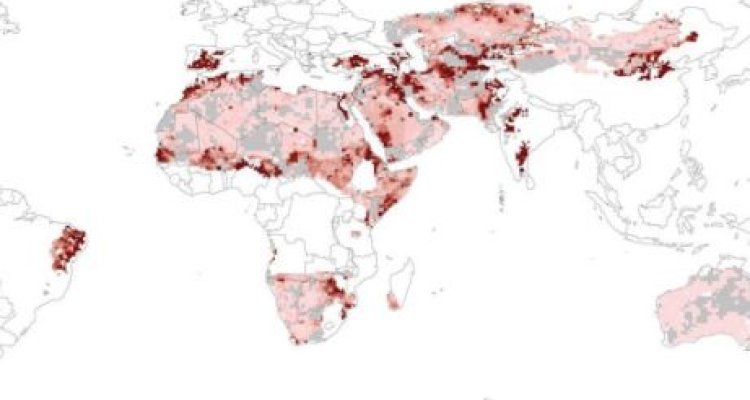
News
Publication: Environmental drivers of human migration in drylands – A spatial picture
The article of Kathleen Neumann, Diana Sietz, Henk Hilderink, Peter Janssen, Marcel Kok, Han van Dijk: Environmental drivers of human migration in drylands – A spatial picture has been published in Applied Geography, Volume 56, January 2015, Pages 116–126.
doi:10.1016/j.apgeog.2014.11.021
Abstract
It is widely accepted that environmental change can influence human migration. In particular, the environment plays a role in migration processes in drylands, in which environmental change—including increasing variability of rainfall, increasing frequency of droughts, chronic water shortage, and land degradation—can heavily influence migration. However, systematic large-scale studies of the relationship between environmental factors and human migration are rare, and a global, consistent picture of environmental drivers of migration is lacking. In this study, we sought to fill this gap by analysing spatial patterns of environmental drivers of migration in drylands by performing a cluster analysis on spatially explicit global data. In this analysis, we focused explicitly on precipitation, aridity, drought, land degradation, soil constraints, and availability of cropland and pastures as potential environmental drivers of migration in drylands. In addition, we linked the identified clusters to two observed hotspots of out-migration—Burkina Faso and Northeast Brazil—to gauge the cluster results. Our results show that environmental drivers can be grouped into eight distinct clusters, and we identified the most severe environmental constraints for each cluster. These results suggest that out-migration—both in absolute and relative terms—occurs most frequently in a cluster that is constrained primarily by land degradation rather than water availability.
Keywords: Drylands; Environmental pressure; Human migration; Cluster analysis; Spatial data.